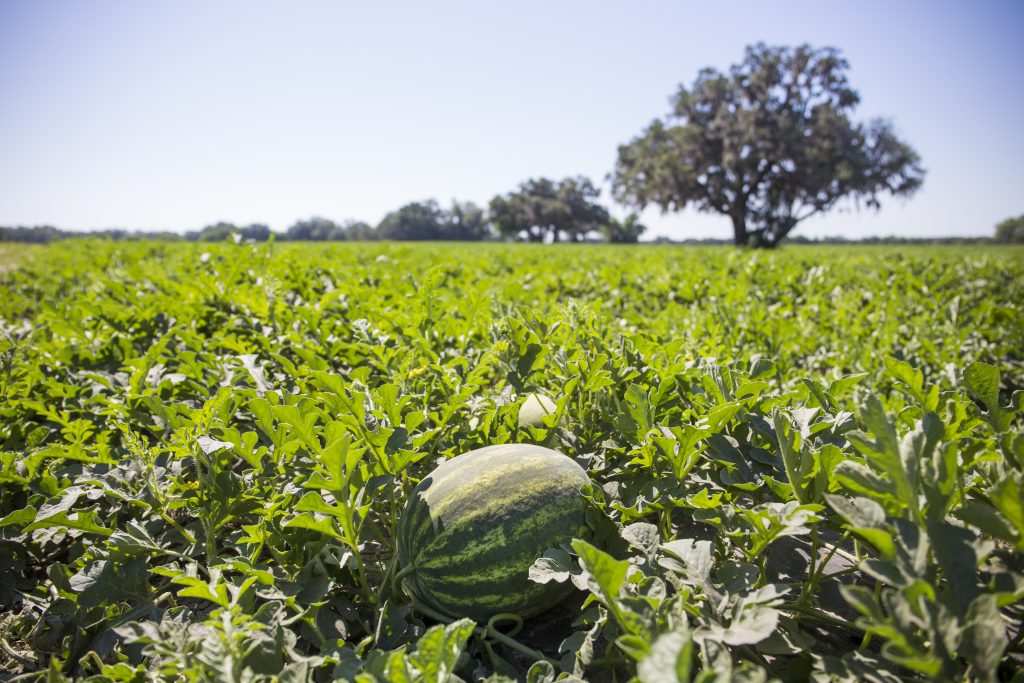By Clint Thompson
What is the value of North Florida watermelon growers terminating their crop chemically when harvesting is done for the season? It could prevent further buildup of a specific pathogen, nematodes or even whitefly-vectored viruses.

Producers in the Suwanee Valley Region should consider the practice, believes Bob Hochmuth, University of Florida Institute of Food and Agricultural Sciences (UF/IFAS) Regional Specialized Extension agent in Live Oak, Florida.
“Would an early termination, as soon as the farmers are done, would an early termination be beneficial?” asks Hochmuth. “I do not have any research that says what the role of an early cleanup would be, but I think we need to start thinking about this because Fusarium (wilt), as we have talked in the past few weeks, Fusarium has become a very serious issue for us. We need to look at every little bit we can get culturally and see if there’s an impact.”
Fusarium wilt of watermelon is caused by the fungus Fusarium oxysporum f. sp. Niveum, according to UF/IFAS. The pathogen is host-specific to watermelon and will not cause disease on other closely related cucurbits or noncucurbit hosts.
The first field symptoms in watermelon plants will be dull gray-green leaves and wilting during the hottest part of the day. Wilted plants can recover at night, but over time, symptoms become permanent. Infected plants eventually collapse and die.
Hochmuth said there is an understanding among pathologists at UF/IFAS that crop termination has multiple benefits from pest and weed management standpoints.
“This may be a future research need. I am particularly interested in finding cultural practices that may help reduce the carryover load of soil-borne pathogens like Fusarium wilt,” Hochmuth said. “I can’t help but wonder if there are fields that look ‘Fusarium free’ at the end of a given season in a given field, yet to find out Fusarium may have been there in low amounts and was undetected, until the next time watermelons are grown there.”









